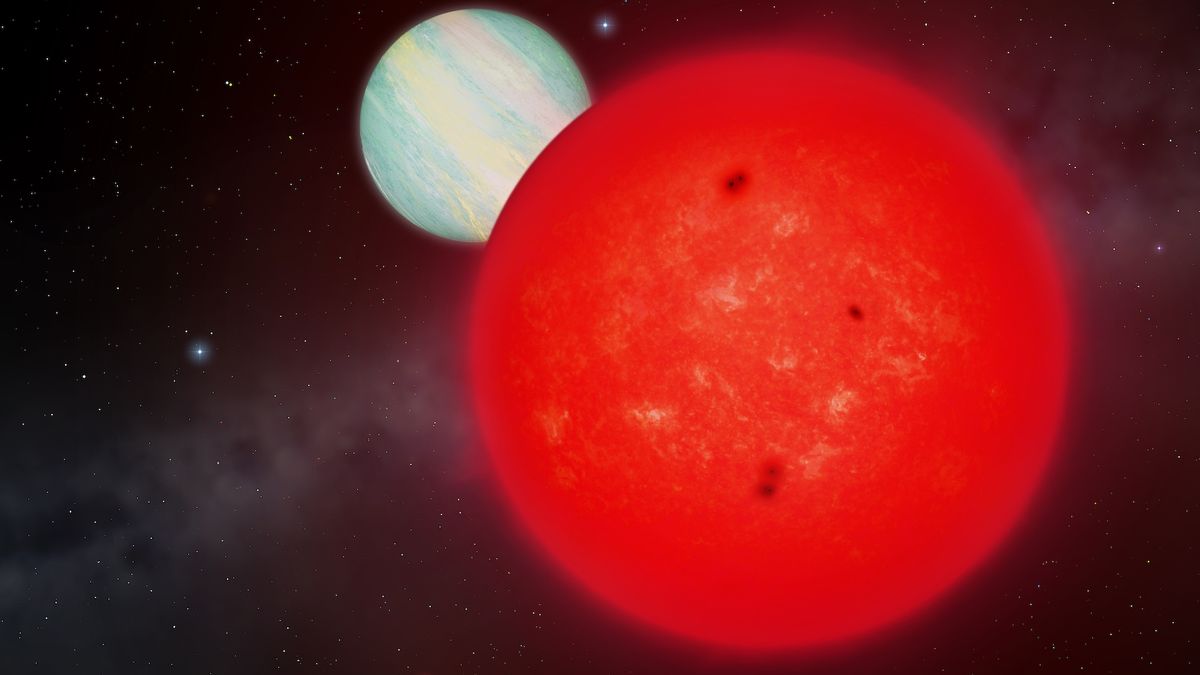
Ginormous planet discovered around tiny red star challenges our understanding of solar systems
How did your country report this? Share your view in the comments.
Diverging Reports Breakdown
Ginormous planet discovered around tiny red star challenges our understanding of solar systems
A team of researchers discovered a giant planet, dubbed TOI-6894b, orbiting a low-mass red dwarf star. The findings add another example to a growing list of space objects that challenge standard models of planet formation. The planet’s radius is slightly larger than Saturn’s, and it orbits its star in just 3 days. The discovery suggests that there could be many more of these behemoths in the Milky Way.”We did not expect planets like TOi-68 94b to be able to form around stars thisLow-mass,” study co-author Edward Bryant said. “This discovery will be a cornerstone for understanding the extremes of giant planet formation””We don’t really understand how a star with so little mass can form such a massive planet! This is one of the goals of the search for more exoplanets,” he said.
Scientists have spotted a massive planet where one shouldn’t be able to exist, according to leading theories of planet formation.
A team of researchers discovered a giant planet, dubbed TOI-6894b, orbiting a low-mass red dwarf star about 241 light-years away from Earth. The findings, published June 4 in the journal Nature Astronomy , add another example to a growing list of space objects that challenge standard models of planet formation.
“It’s an intriguing discovery,” study co-author Vincent Van Eylen , an astrophysicist at University College London’s Mullard Space Science Laboratory, said in a statement . “We don’t really understand how a star with so little mass can form such a massive planet! This is one of the goals of the search for more exoplanets.”
For years, astronomers thought low-mass stars, less than roughly a third the mass of our sun, would not be able to accumulate enough material to form giant planets. But a few examples that defy these predictions have cropped up, and scientists are looking for others to help revise theories of planet formation.
To seek out these planets, study co-author Edward Bryant , an astronomer at University College London, and colleagues turned to the Transiting Exoplanet Survey Satellite (TESS), a NASA satellite launched in 2018. In a 2023 study , Bryant and colleagues spotted 15 potential giant planets, including TOI-6894b, orbiting low-mass stars. The team homed in on TOI-6894b and its star with additional observations from TESS and several ground-based telescopes.
Combining this data, the researchers found that TOI-6894b has about 17% as much mass as Jupiter, or about 53 times as much mass as Earth. The planet’s radius is slightly larger than Saturn’s, and it orbits its star — which contains about 20% as much mass as the sun — in just 3 days.
Related: Scientists have discovered a new dwarf planet in our solar system, far beyond the orbit of Neptune
Sign up for the Live Science daily newsletter now Get the world’s most fascinating discoveries delivered straight to your inbox. Contact me with news and offers from other Future brands Receive email from us on behalf of our trusted partners or sponsors
“We did not expect planets like TOI-6894b to be able to form around stars this low-mass,” Bryant said in the statement. The red dwarf is the lowest-mass star discovered to host a giant planet so far. “This discovery will be a cornerstone for understanding the extremes of giant planet formation.”
Though reports of giant planets orbiting red dwarfs are still rare, the discovery suggests that there could be many more of these behemoths in the Milky Way. “Most stars in our galaxy are actually small stars exactly like this, with low masses and previously thought to not be able to host gas giant planets,” study co-author Daniel Bayliss , an astrophysicist at the University of Warwick, said in the statement. “So, the fact that this star hosts a giant planet has big implications for the total number of giant planets we estimate exist in our galaxy.”
TOI-6894b and other giant planets orbiting low mass stars throw a wrench in the core accretion model, the most common theory of how giant planets form. Typically, a giant planet’s core grows until it’s massive enough to quickly pull in gas from the surrounding protoplanetary disk. But the protoplanetary disks around low mass stars weren’t expected to contain enough material for this to occur.
Instead, TOI-6894b could have slowly accumulated gas over time, or it might have formed from a gravitationally unstable protoplanetary disk that collapsed into a planet. Studying the distribution of material in the planet’s atmosphere could offer some clues to how it formed, according to the scientists.
